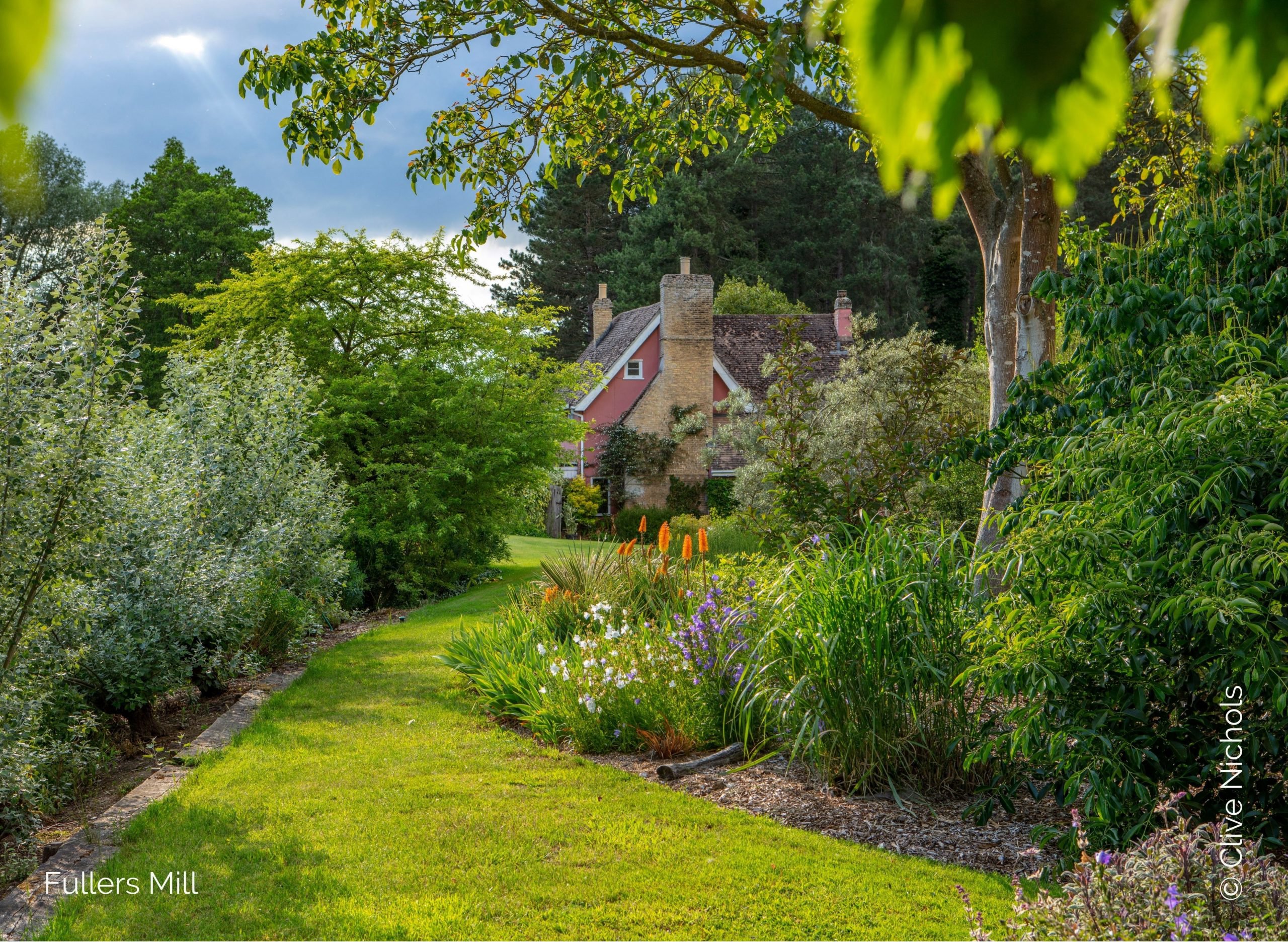
Taking Care Of Your New Garden
A new garden is a big investment. It can be quite daunting when you are left with this fabulous new outdoor space, but not sure how to look after it. Below are some tips, but remember you can also employ and APL Professional Gardener, or some APL Landscapers will provide maintenance services too.

The First 12 Weeks
Some elements of your new garden may need extra TLC in the first 12 months after installation. Here are our tips on taking care of your new garden.
- Water newly turfed lawns daily until the roots are well established.
- Consider adding to sealant to natural stone patios and pathways.
- Timber decking may need oiling.
- If you are planting your garden yourself, a professionally created planting plan will be enormously helpful.
- Keep newly planted beds and borders weed free and well watered.
- Trees need a surprising amount of water - consider installing specialist watering systems.
- Allow ponds to settle and clear before adding fish.
- If in doubt, ask your landscaper or a professional gardener for advice.
Caring For Newly Laid Turf
A beautiful lawn is the crowning glory of any garden. Somehow, that lush green carpet brings the whole design to life. But in order to keep your lawn looking good, your new turf will need plenty of TLC in its first 12 weeks. When it comes to taking care of your new garden, lawn care should be at the top of your list of priorities.
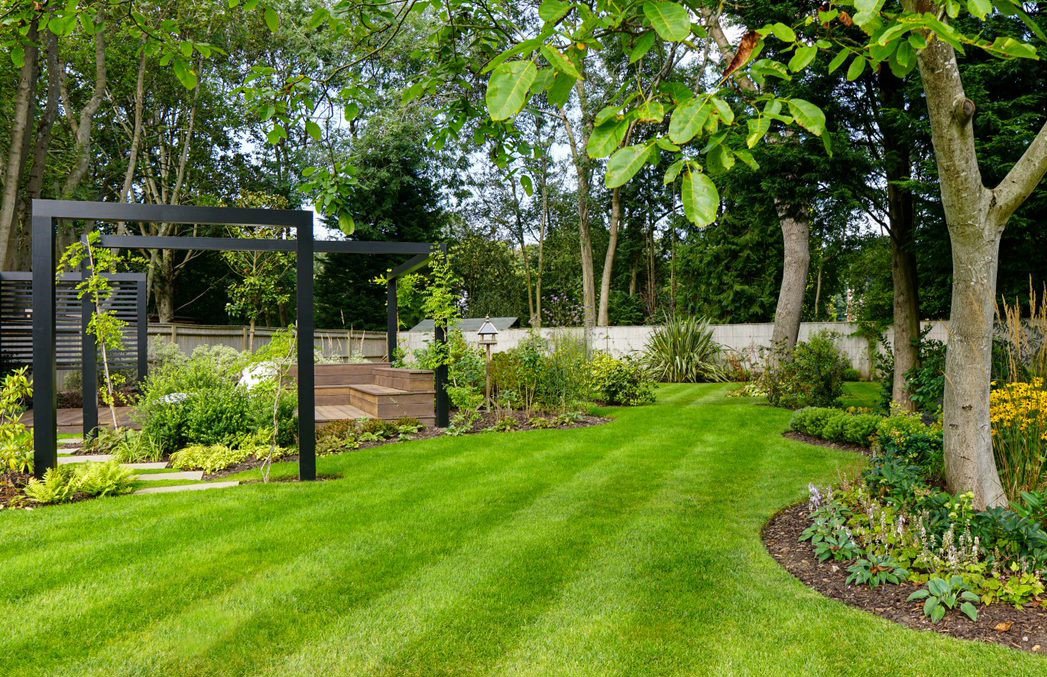
Watering:
Follow the advice from your landscaper and/or your turf supplier very carefully indeed. The soil beneath newly laid turf must never be allowed to dry out. At least not until each turf has rooted firmly in to the ground.
Water your turf thoroughly during the evening once the heat has died out of the day. You need that water to sink into the soil, not to evaporate into the air. In very hot weather, be prepared to irrigate twice a day. How will you know if your lawn has had enough water? It’s OK to gently lift one corner of a turf to see if the soil is good and wet. Don’t forget to pay extra attention to the edges of your lawn - smaller pieces of turf are more vulnerable to death by dehydration.
Keep off the lawn as much as possible for the first 6 weeks.
As inviting as your lawn may look it’s important to remember that the root system is still immature and quite delicate. It’s OK to walk across your new lawn occasionally. But it’s best to let the grass plants get really well established before inviting the neighbours round for a party. Dogs with the zoomies or footballing children are also best kept off the lawn for as long as possible.
Mowing your lawn for the first time:
If the grass is growing well you may be tempted to get the mower out and give it a haircut. Please do the tug test first. Grab a handful of grass and give it a sharp pull. If you feel the turf lift - leave the mower in the shed for another week. If, however you end up with a handful of fresh green blades, it’s safe to mow your lawn.
Make sure that your mower blades are really sharp - they should slice through paper. Dull blades will rip at the grass leaving ragged edges that heal slowly, leaving the young plants vulnerable to disease. Raise the cutter bar as high as it will go - with your first cut, you should never remove more than one quarter of the grass length. If your lawn is 8cm high, it’s ok to bring that down to 6cm. Over time, and as the plants get better established, you can gradually reduce the cutting height.
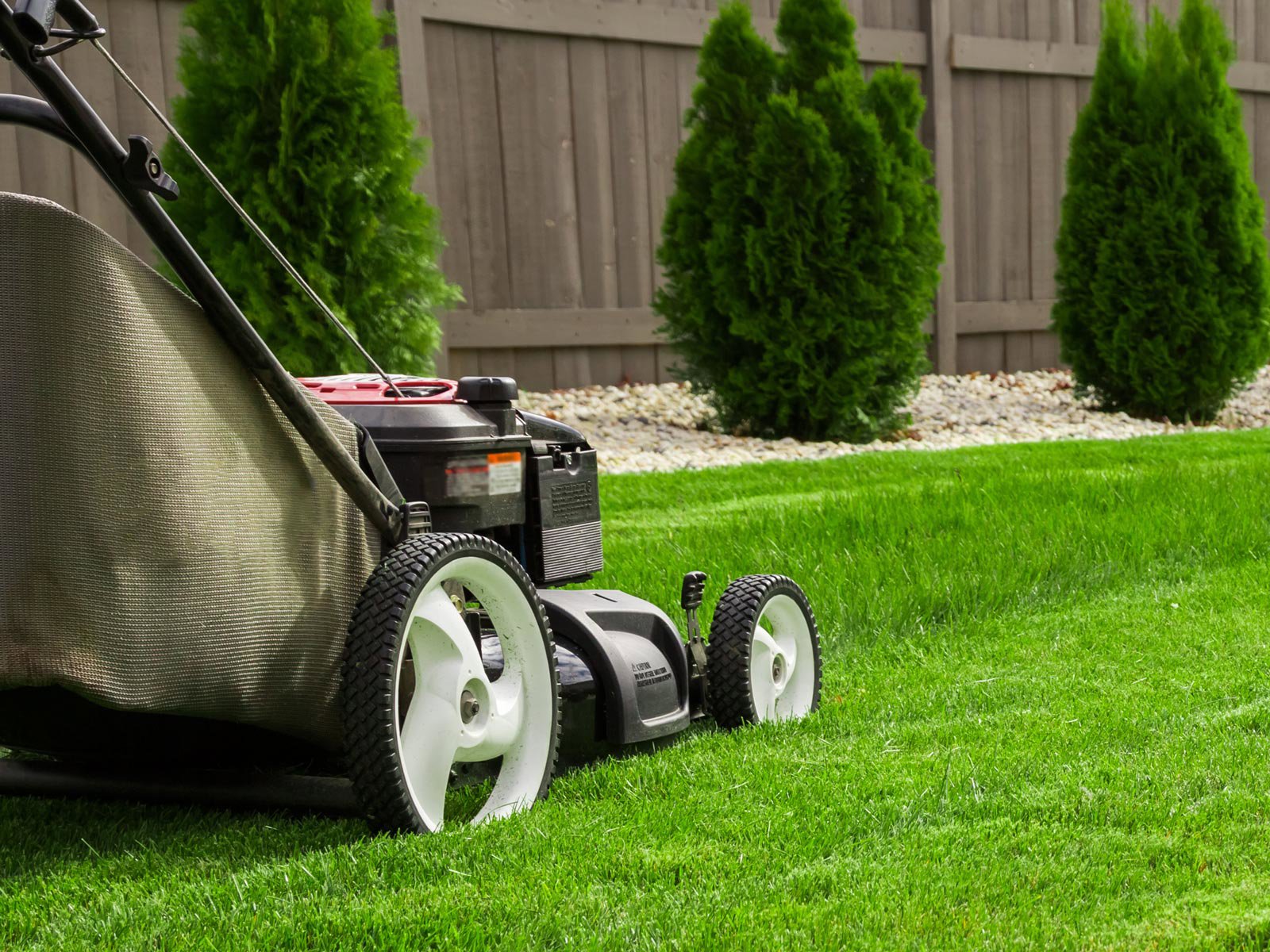
Feeding your new lawn:
Was a pre-turfing feed applied to the soil before your lawn was laid? If not (or if you’re not sure) it’s a good idea to apply a lawn feed 6 weeks or so after the turf was installed. Choose a lawn feed that is correct for the time of year and follow the manufacturers instructions to the letter. DO NOT spill any lawn feed on to any of your hard landscaping surfaces - it can leave a mark. Stand your fertiliser spreader on a big piece of cardboard or an old carpet when you fill it up - that way you will protect the surfaces beneath it. Better still, hire a professional gardener to help you take care of your new garden.
Troubleshooting:
Lawns are living things and sometimes behave in unexpected ways. If you are at all concerned, please don’t be afraid to ask your landscaper for advice. 9 times out of 10 there’ll be nothing to worry about but it’s good to have some reassurance.
Taking Care Of Hard Landscaping Features
Natural Stone
Natural stone is porous, which means that it will absorb any liquids that are spilled on it. That’s fine for rainwater, but oil, wine, fruit juice, ketchup and other everyday substances can leave a nasty stain. Ask your landscaper about stone sealants. For best results they should be applied as soon as possible after laying your patio or path. Always follow the manufacturers instructions and wear the appropriate protective gear.
Sometimes natural stone shows signs of efflorescence. Minerals from inside the stone get dissolved in water and travel up to the surface creating a pale coloured bloom. It’s not unusual in newly laid stone and it’s nothing to worry about. Simply use a dry brush to sweep it away. Avoid adding water. Efflorescence normally disappears within 12 weeks or so but if you are at all worried, ask your landscaper for advice.
If your patio appears dusty, a light sweep with a soft broom will soon perk it up. If you feel it needs washing, then please don’t use a jet washer. Pressure washers or jet washers are too powerful for use on patios. They can spoil the surface of the stone and may dislodge the grout.
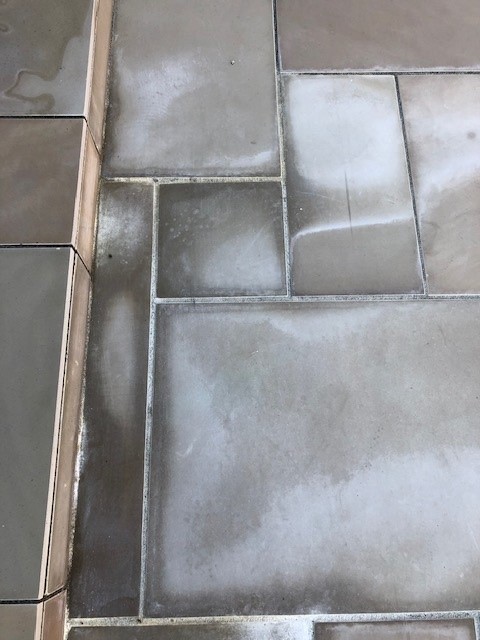
Porcelain Paving
Porcelain paving is stain resistant and so shouldn’t need sealing. However, if you do spill anything on it, clean up ASAP with a soft cloth or a damp mop. As with natural stone, never use a pressure washer on your porcelain pavers. Warm water, detergent and a swoosh down with an ordinary garden hose are all you need to take care of your new hard landscaping features.
Decking
Composite decking will need very little TLC. However, if you have installed natural timber decking it’s a good idea to apply an oil based treatment to extend the life of the wood for as long as possible. If your landscaper has not already treated your decking for you, they will be able to advise you on the best products to use. As ever, work methodically, follow the manufacturers instructions and wear protective clothing.
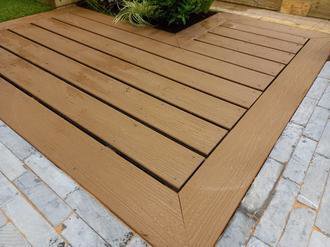
Taking Care Of Your New Garden: Plants And Trees
Plants and trees are a crucial part of garden styling. Not only that, they are humanity’s strongest weapon in the fight against climate change. And so it’s important to take care of your new plants and trees in the early weeks so that they can establish well and grow strongly.
The first step to a sustainable planting scheme is choosing the right plants for each area of your garden. Think about the plants’ preferences for light, shade and soil type. But consider too, their growth habits. What will they look like in five years time? How big will they grow? Will some species outcompete their neighbours leaving you with a monoculture?
If you are not 100% confident with your plant knowledge, it’s well worth investing in a professionally drawn planting plan. Any APL registered garden designer or APL Professional Gardener will be able to help you create a planting display that matches your personal taste and style.
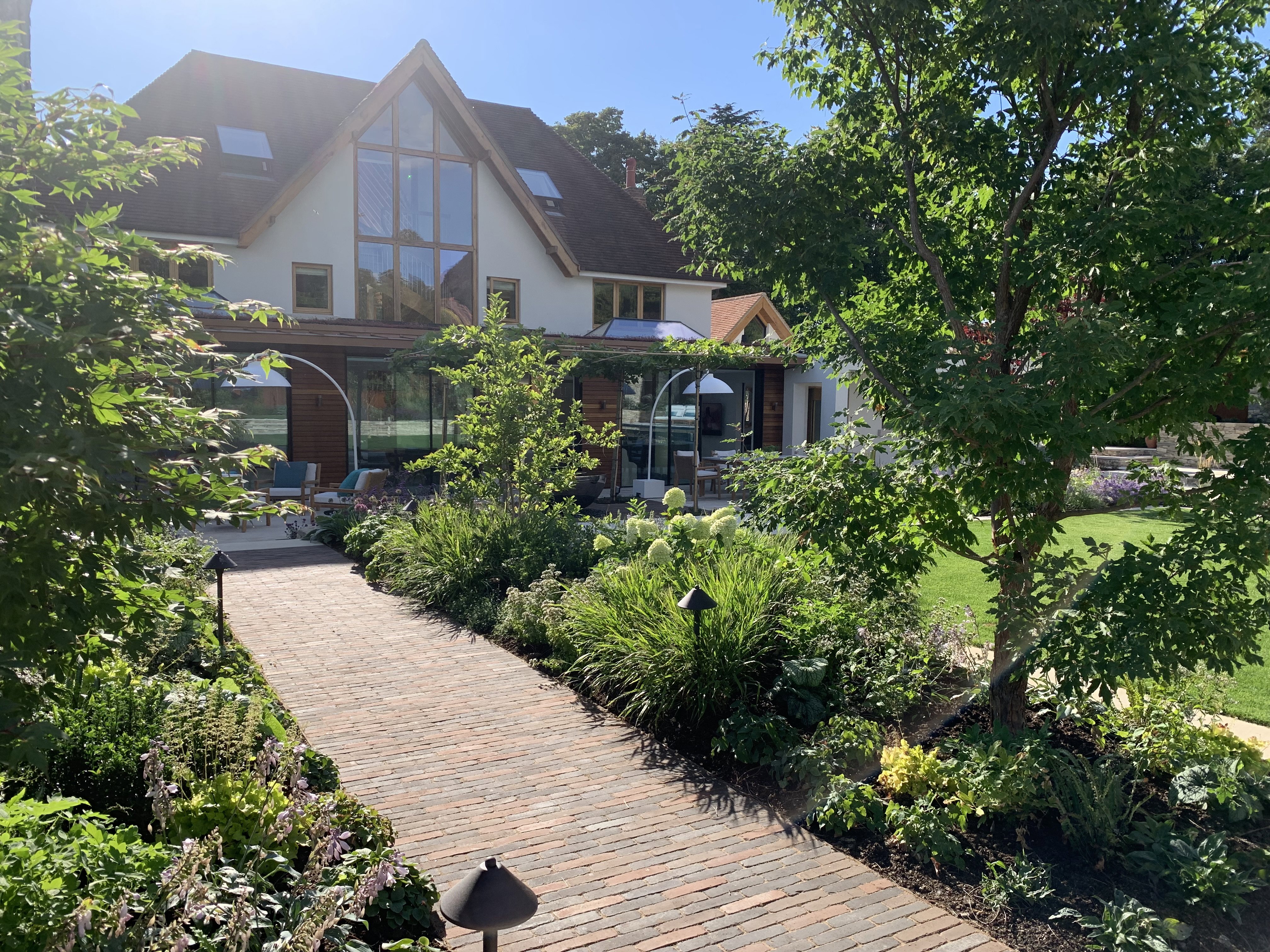
Watering:
It’s advisable to keep new plants and trees well watered for the first 12 months after planting them. That may sound like a long time, but remember the British weather will help you out for some of the time. Your job as a garden owner is to supplement the irrigation when there’s not enough rain.
Your landscaper or professional gardener can install an irrigation system to help you. Modern watering systems can even be controlled from a phone app or from smart devices such as Alexa. Which means of course, that you can still be taking care of your new garden whilst on holiday.
Mulching:
Adding a layer of compost, bark or aggregate to the top of the soil around plants is known as mulching. It’s an age-old technique to help retain moisture and control weeds. It’s also an important task for anyone taking care of a new garden.
Feeding:
Depending on your soil type, the time of year and the plants you are trying to establish, you may want to apply fertiliser. Do your research very carefully and never add more feed than the manufacturers recommend. When it comes to plant nutrition, too much can be deadly.
Help With Taking Care Of Your New Garden
If taking care of your new garden feels overwhelming, don’t panic. Help is at hand. Within the Association of Professional Landscapers is a group of very talented people collectively known as professional gardeners. These people understand all of the nuances of lawn care, plant nutrition, pruning, and watering. They also know how to look after ponds and hard landscaping features.
All you need to do, is visit the APL members directory to search for a professional gardener near you. https://www.landscaper.org.uk/find-a-landscaping-professional/landscaper-directory
Click here for more tips on how to maintain your garden. https://www.landscaper.org.uk/consumer-information/how-to-maintain-your-garden
